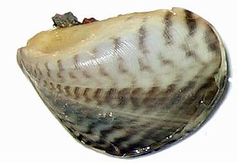Difference between revisions of "Quagga"
From Glen Canyon Dam AMP
(add Quagga Surface Tests.jpg) |
(fix) |
||
| Line 5: | Line 5: | ||
[[Image:Quagga Surface Tests.jpg|thumb|right|150px]] | [[Image:Quagga Surface Tests.jpg|thumb|right|150px]] | ||
[[File:Quagga Surface Tests.jpg|thumb|left|350px]] | [[File:Quagga Surface Tests.jpg|thumb|left|350px]] | ||
| − | |||
| − | |||
| − | |||
| − | |||
---- | ---- | ||
Revision as of 12:21, 30 April 2014
This is the Quagga Mussle Information Page-
Contents
Quagga Facts/ Trivia
What are the Currently Effective Control Methods Used for Mussels?
Methods of Control:[1] Oxygen Deprivation | Temperature Treatments | Exposure and Dessication| Ultraviolet Radiation | Manual Scraping | High-pressure Jetting | Mechanical Filtration | Passive and Barrier Filtration | Removable Substrates | Chemicals (Chlorine) or Molluscicides | Ozone | Antifouling Coatings | Electric Currents| Sonic Vibration | Natural Predators or Biological Controls| Bacteria (Pseudomonas Fluorescens)
Quagga Mussel Information
Zebra VS Quaggas:
- Quaggas are the dominant species of the two and will displace Zebras.
- Quaggas tolerate colder temperatures, and are more abundant at greater depths, reproduce at lower temperatures, and are more likely to grow in single layers and produce more patchy distributions.
- Unlike Zebras, Quaggas don't necessarily need hard substates to attach and grow. They can grow on the soft, silty bottom sediments.
Quagga Mussel Archive
- JS-Online_Quagga Video link_Affects to the shore line of Great Lakes
- 080509_Quagga Video Feed at Fish Hatchery
References
The Bureau of Reclamation- Quagga web-page


